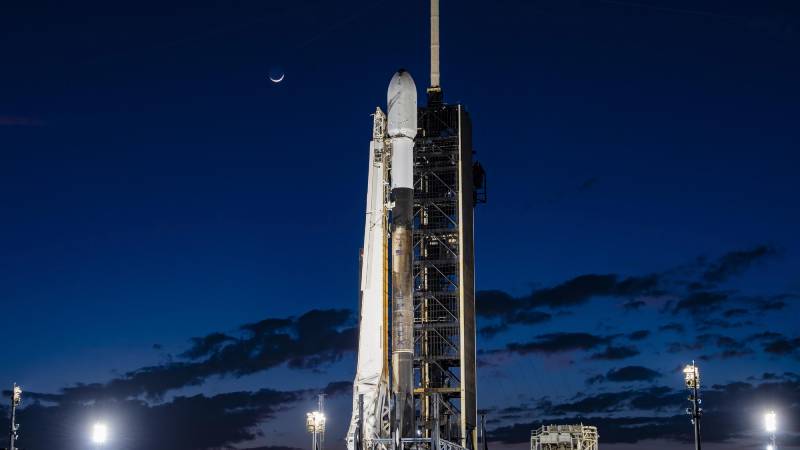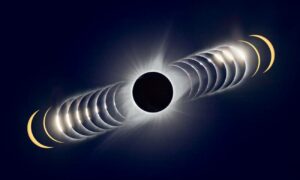Another month, another attempt to reach the moon, but not on Wednesday.
SpaceX announced Tuesday night that it has postponed its plans to launch a commercial lunar lander.
The spacecraft, manufactured by Houston-based Intuitive Machines, sits atop a rocket on the launch pad. Although weather conditions were favorable, the flight was delayed by at least a day due to technical issues. The next attempt will be Thursday at 1:05 a.m. ET.
If all goes well, it will be the first American spacecraft to make a soft landing on the moon since Apollo 17 in 1972. This is also the latest private attempt to send a spacecraft to the moon.
Why was the launch postponed?
The Intuitive Machines lander, named Odysseus, was scheduled to lift off aboard a SpaceX Falcon 9 rocket from NASA’s Kennedy Space Center in Florida at 12:57 a.m. ET on Wednesday.
SpaceX stated that the lander’s methane fuel temperature was “off-nominal” in a late-Tuesday statement on the website X.
If technical issues are resolved, good weather is expected for the next launch opportunity on Thursday. You’ll have another chance to start backing up on Friday.
When and where is the landing?
If the launch takes place this week, landing will take place on February 22 near a crater called Malapart A. (Malapart A is a satellite crater of the larger Malapart crater, named after the 17th century Belgian astronomer Charles Malapart).
Odysseus enters orbit around the moon approximately 24 hours before the landing attempt.
The landing site on the far side of the Moon, about 295 miles from the South Pole, is relatively flat and easy for spacecraft to land on. No U.S. spacecraft has ever landed on the moon’s south pole, but many space agencies and companies are paying attention to the lunar south pole, which could be rich in frozen water.
How big is the spacecraft?
Intuitive Machines called their spacecraft design Nova-C and named this lander Odysseus. This is a hexagonal cylinder with six landing legs that is approximately 14 feet tall and 5 feet wide. Intuitive Machines notes that the lander’s body is about the size of an old British telephone booth, similar to the TARDIS from the science fiction TV show Doctor Who.
At launch, the lander weighs approximately 4,200 pounds with full fuel.
What Will Fly to the Moon?
NASA is a major customer for Intuitive Machines flights. It will pay the company $118 million in shipping fees for the payload. NASA also spent another $11 million on the design and manufacture of his six instruments in flight:
- A laser retroreflector array that reflects laser beams emitted from Earth.
- A LIDAR device to track the spacecraft’s exact velocity and altitude as it approaches the lunar surface.
- Stereo camera to record video of the dust cloud kicked up by the lander’s engines during landing.
- Low-frequency radio receiver for measuring the effect of charged particles near the lunar surface on radio signals.
- Beacon used for autonomous navigation system demonstration, Lunar Node 1.
- An instrument in a fuel tank that uses radio waves to measure the amount of fuel remaining in the tank.
The lander also carries several other payloads, including a camera built by students at Embry-Riddle Aeronautical University in Daytona Beach, Florida. An instrument that will be a precursor to future lunar telescopes. and an art project by Jeff Koons.
Wasn’t it just an American spacecraft heading to the moon?
On January 8, Astrobotic Technology sent the Peregrine lander to the Moon. However, a propulsion system failure occurred shortly after takeoff, eliminating any possibility of landing. Ten days later, Peregrine returned to Earth and burned up in the atmosphere over the Pacific Ocean.
Odysseus and Peregrine are both part of NASA’s Commercial Lunar Payload Service (CLPS) program. The goal of the program is to use commercial companies to send experiments to the moon, rather than NASA building and operating its own lunar lander.
“We’ve always viewed these initial CLPS deliveries as being kind of a learning experience,” Joel Kearns, the deputy associate administrator for exploration in NASA’s science mission directorate, said during a news conference on Tuesday.
In order to launch more missions more regularly and get ready to send astronauts back to the moon as part of its Artemis program, the space agency hopes that this strategy will be significantly less expensive.





